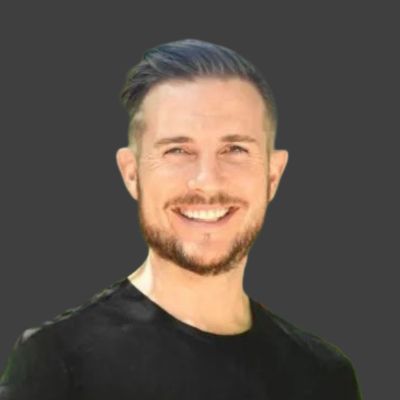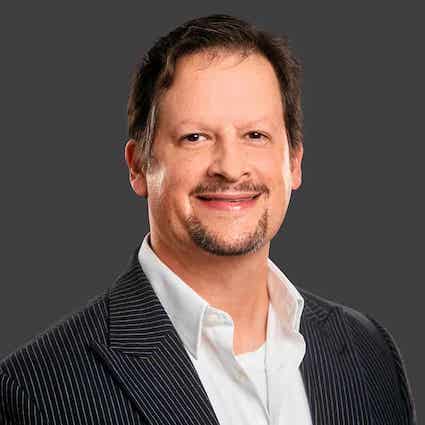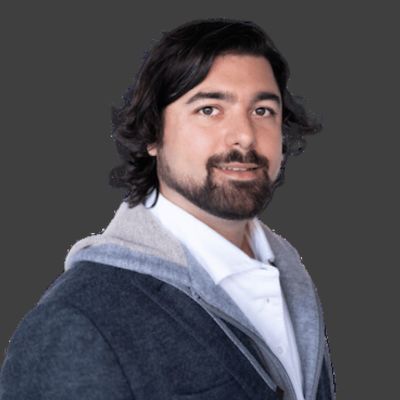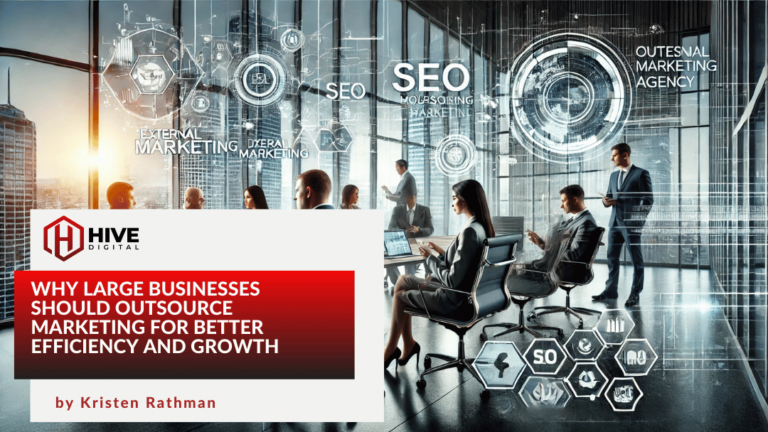Google is constantly changing the search landscape in an effort to improve their users’ shopping experience. For purchase intent queries, Google is creating a window-shopping like experience by pulling content off of websites and presenting it directly to users, reducing the likelihood that search engine users will click from the search results page and into your website. This has created a highly competitive landscape, where brands must convince users to click through to their pages with les real estate and visibility.
Join team members John and Sheffield for this 50 minute webinar, where you will learn how to adapt business strategies to the changing Google landscape and ways to improve both the click-through-rate and conversion rate for your E-commerce website.
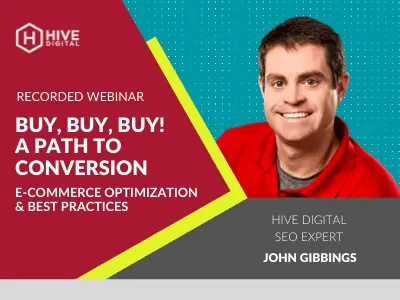
E-commerce Optimization
In this webinar, you will learn:
- How to identify page types that Google will rank for various search intents
- Tips to improve your site’s navigation and insight into the user purchase journey
- How to leverage user generated reviews to confirm your customer’s purchase decisions
Meet Your Hosts

Sheffield Pulley
Passionate about companies and causes that are tackling some of the world’s most difficult issues within the mental wellness, healthy lifestyle, and sustainability industries, Sheffield Pulley helps globally responsible organizations grow their territory of influence while positively affecting their bottom line. Since joining our team in 2017 as a proven professional, his skills, methodologies, and passions have continued to drive positive client experiences and a thriving business development model, while also preserving and nurturing Hive Digital’s commitment to empowering globally responsible organizations with industry-leading innovation and digital marketing expertise.

John Gibbings
John has been working, adapting, and succeeding within organic search for multi-million dollar companies since 2011. He is a Senior SEO Consultant with Hive Digital, where he works to ensure the best focus and care is given to each client.
Do You Prefer Reading vs. Watching?
Sheffield Pulley:
All right, we'll go ahead and get started here. I want to thank everyone for joining us. We're excited to have John with this, John, when was it? You did your last webinar been about a year or so?
John Gibbings:
I think it was actually almost a year today. Yes.
Sheffield Pulley:
Okay, nice. Nice. If you haven't had a chance to check out that I would highly, highly recommend going back. If it gets on our YouTube channel, we also have it on our website with all the rest of our webinars as well. I'm excited to have you back, buddy.
John Gibbings:
I appreciate it. Thank you.
Sheffield Pulley:
Yeah man. For the participants, we're going to hold the Q & A until the end. So if you want to, as we go drop in questions that might come up, John will be answering them at the end. We are going to be recording the webinar for those unable to attend. And for those that want to go back and take a look, we'll be also sending out resources with a follow-up email giving a little more, which will give you the deck and also some additional information that John wants to pass along. So with that, I will pass it on to John, looking forward to it, buddy. Thanks so much for doing this.
John Gibbings:
Yeah, thanks Jeff. Welcome today, everyone. My name is John Gibbings. I'm one of the SEO consultants here at Hive Digital for today's training. It's titled Buy, Buy, Buy where the goal of this is to increase e-com, website, just revenue generation, looking at the search results and understanding what really makes our products perform and sing so that they really meet the end user and your just ideal customer. So like I said before, I'm one of the consultants at Hive digital, where we're here to make the world a better place.
John Gibbings:
My name is John Gibbings. Go that again, just going over these slides. And I've been here with Hive Digital for about eight years now, give or take about a decade full of experience. And a lot of what I focus on is content strategy, where I work to improve the visibility of the content and the overall value that a website provides to its user base. I leveraged the search results and some of the information you can glean from those as well as third-party tools, which I'm happy to go through later in this slide deck, and one of the things I wanted to discuss as well is the evergreen content life cycle, where as you develop content for your website, you start to revisit it over time, and make sure that you leave it polished, it stays fresh and applicable to your main user base.
John Gibbings:
Now a little bit more about myself. I'm an MBA husband and girl dad. I have a beautiful daughter, Paisley, a fantastic and amazing and beautiful wife, Brooke. I have a daughter on the way we are just about a month away from being a month away. So we're, we're trying to get prepared as best we can. They're very excited to, to meet the young Aubrey, hopefully sooner rather than later, but I'm excited, maybe not too soon.
John Gibbings:
So as far as today's webinar: we want to identify the type of pages that Google will identify and recognize. And these are page types and what Google will do, what signals you can glean from that to identify what is preferred and what we can try and do to get that increased ranking and search exposure. Now, I want to share with you some tips on how you're going to prove your site's navigation and also talk about the user journey.
John Gibbings:
And then lastly, I'd like to look at some signals that we can provide to Google based off your user base with the reviews, feedback, and some star ratings, that way we can try and reaffirm the purchase decision that your customers are looking for. And I'll get into that a little bit more later. So for the overview, I'm excited to be here. This will be recorded as a Jeff shared earlier, and you may hear my dog. She's going to be excited to be here as well. Mail generally comes around this time. So if she speaks up or you hear her in the background, I just won't be alone.
John Gibbings:
So to start, we have Search Engine Optimization, and I like to kind of go over a definition of what that is. Generally it's visibility for an individual landing page or set of landing pages in the search results that are organically driven. This meaning that someone types in the query, they have a question that they're looking for, and you have a page that shows up. This is a quick example of what you could typically see in an e-commerce search result. We have the paid search ads, paid ads at the top. We have some search features. So you might see that search engine result page. We have the features with that here. We have a quick answer. People also ask, and I have some more examples later on. To the right we have the Google shopping ads. And then at the bottom are the search engine results. Generally the blue links, we have a couple other bits of information included in there as well.
John Gibbings:
So a couple of caveats with Search Engine Optimization. It's a game of practice changes to the website. Don't immediately take effect on the worldwide web. It takes a little of time for Google to understand it, digest it, and then present that information in a meaningful way to users.
John Gibbings:
With that, you can also look at the search results to determine what Google understands as the main intent behind the search query. So if you're looking for one thing versus another, what other page would Google typically rank? And with that information, you can start to tailor your own content and how you position yourself as a brand to meet that query. So the number three is a big one. We have Google actively camouflaging the organic search results, and I'll provide some examples further on, but what the important takeaway there is organic search results are more and more difficult to present and compete as the real estate begins to draw back. When do we start showing paid ads, the search features and a number, other things that we can typically see in the organic search result. That doesn't mean that it's typically bad because you can succeed in each of these opportunities, but it's something to consider. And lastly, we have the Google domain diversity update, and that is where Google will typically show two landing pages per website for any given query.
John Gibbings:
And that really kind of compounds this issue here, where we have less real estate in some organic results. I'll break that down a little bit further. So before we get into it, what does Google see? And what does Google present from a landing page? And that's the metadata. Here I have some examples of what you can typically see. We have the URL listed up top. We have the meta description, the page title, and then the rich snippets. Down below, you can see the star rating. You can see the number of reviews for a product the average price, and whether it's in stock or not.
John Gibbings:
So as far as the title tag best practices, I always like to leave people with useful information, something that's actionable from these webinars. What can you take away and really make your own site better. And here's some best practices for that. Ideally, we want to have the main phrase to the left, most portion of the page title followed by any secondary keywords or categories, and then the brand name, try and keep that succinct across the entire site. Generally the optimal length will be 50 to 60 characters, but the real measurement is the number of pixels. And that's the total width. That's about 600 pixels.
John Gibbings:
And the meta description is very similar to that, but it's not quite a rankings factor, like the page title. It's the banner advertisement for your page to convince people to click into the site. Generally, it's about 150 60 characters before it starts to concatenate can be chopped off. You might see garden here at the bottom, right? With the three little dots. That's what typically happens when the meta-description is too long. We found that about 50 characters as best, be quick succinct, and to the point to draw people in.
John Gibbings:
Now that we've talked about what Google typically shows, I want to talk about content and the multiple different types of content that you can have on the site. As your site ages, you begin to create individual pieces that help to supplement the main purpose and intent, which typically in e-commerce is to, draw people to your products, communicate the value to that, and then guide their decision-making through to the point of a purchase or conversion. And with that, we have a number of different options. You can look at video, visual, which be a slide deck like this blogs for the text or individual product pages, PDFs, which if you have something highly technical, that might be something where users take that information offline. And then something that's usually socially driven like a quiz or a test.
John Gibbings:
Now, with all of that, it's important to know that there's been research in the past couple of years where the majority, as in more than 50% of all queries performed result in a zero click search, this means that users are coming to Google, they're typing a search query and they're gaining the answer they're looking for before they even hit a site and then they'll leave. And that's where search features are becoming really important.
John Gibbings:
Google is taking information from your landing page, presenting it in a new way so that users are no longer required to come to your website. It's something to be mindful of. And there are a couple of things that you can, you can glean from that as well. Do users come to the search result? Do they type something again, realizing it's not a great fit. And they go back and try and search for a new face, like something else, or they decide that they can just drive down the street to the big box store and buy it there? All the things that we need to consider and look at just a little bit more closely.
John Gibbings:
Now with SEO for e-commerce, there are three things that I'd like to keep in mind as we go through this webinar. And that is with your website we need to build affirmation, trust, and direction for your users. Once users come to the site, that's great, but what they do once the there's almost just as important. And that's where user experience comes in to play. How have you built things? How have you laid it out? Do you prescribe to greedy marker syndrome where they come to their, your website and it's buy now buy now buy now? Sometimes it turns people off. Sometimes people want to shop without being sold to.
John Gibbings:
SEO goes beyond product visibility. If you ever want to know how to do run an e-commerce site well, look at Wayfair. It's a highly visual platform where they go through, and here's some examples of a landing page. It's summertime here. And I'm always looking at bettering my backyard, just making it a little bit more comfortable. And I'm sure a lot of people do that as well. So here's an example of the garden page that's highly visual. People can come in and window shop. And if you're not sold on some of the categories they have here, well, then as you go down the page, you start looking at popular picks. You can start to see review ratings. You can see things that are on sale. You can get an example of how it could look in your yard. If you have a green thumb or are aspiring to have one. And then going back to the affirmation and the trust here at the bottom, you have the shipping guarantees and the value added call-to-actions.
John Gibbings:
Now, once you have your website built, it's really important to start to build authority around your site and make sure that you're putting your products and your product categories and your home page in a position that just builds value and supports each other. And that's where link-building comes into play. Now, most people, when you hear link-building think externally, but I'd argue that it's also just as important to build internally. Google sees it roughly the same, but that might be a whole nother conversation entirely.
John Gibbings:
So one of the things that I really like to talk to is propping up the content that we have on our site through link building. So we have blog posts. If they're talking about a product category link over to it, make sure that you're sending the authority through to the final landing page with relevant anchor text, by link building.
John Gibbings:
And as your site ages and you have the ability to, you can start getting, some PR mentions or your other strategies entirely get the links pointing from other adjacent and noncompeting sites that can reference you and then send some link love over to your, your website and just prop you up a little bit more.
John Gibbings:
There are other strategies as well. And one of those is, our breadcrumbs! Here at number three, just above the product name is a breadcrumb. Generally, these are linked to category pages from your product page or any number of page templates on your site that help guide the user back if they realize they've gone too far into your site and want to navigate further, they can click to their home. You can go to your category page, which would be the product category, or you can click to the product itself. These are all linking ways that you can build up authority and prop up the site. The main navigation is one as well, where you go and you list your most valuable product categories or products, if they're bestsellers or the supporting content as well.
John Gibbings:
Now I had mentioned that, and I like to delve into content as a content strategist, I would like to talk a little bit about the five essential content types for e-commerce websites.
John Gibbings:
We have blog posts, that's the most common for sure. People are writing about the product or the type of products you have or an organization. That's fantastic. One of the tips I'd like to offer people is: if you have a sales team and get commonly asked questions, write a blog post about it, make your life and their life easier. By having that information available, to share with your customers. You have product demos and videos, customer reviews, social media interactions, and FAQ's as well. What are you doing to support your website in your products and really communicate the value through to your users?
John Gibbings:
Okay, here's an example. You have a buyer's guide. We have the father's day gift set for the golf enthusiast. There are a number of ways and then types of content that you can produce. We are happy to help you with that as well, but I'm going to offer some pro tips. Write a story that's and not a boring article, make sure that you guide the user through to the end, keep them on the page, allow them to find something that's relevant, and click through. Use internal links to drive authority, the product categories that touch on that a little bit earlier, and then make sure that when you link to these pages, you use relevant anchor text. And then that's typically the blue link that you provide and the hyperlink to click over. That phrase is attributed to the destination page. So if you have an adjacent article on the site, and you're speaking about widgets and you click through to the widget page, that term widget is attributed to the final location. Something to consider as you start to build up the links internally on the site.
John Gibbings:
I talked about the evergreen content life cycle. This is a strategy that we really love to kind of stress to our clients, and it allows us to revisit content over time and make sure that it's applicable.
John Gibbings:
Once it's published, once it collects dust, and sits there and used on the site, sometimes it's good to revisit it every six months to a year to kind of freshen it up a bit. Are there stats in there from 2018 that are no longer applicable? Are there other mentions that, just are out of date, maybe they speak to a product line you don't carry anymore. You can repurpose that content and point to something that actually is going to convert at the end of the day, point to your best revenue generating content. There are ways you can revisit content in, at a set frequency to where you can continue to allow it to perhaps to provide value. Maybe share it socially. There are a number of things you can do.
John Gibbings:
Going back to the three points I'd called out earlier, building affirmation, trust, and direction. Paddy Moogan. He's one of the gentleman that actually made this wire frame here. And I wanted to provide a call out to him just so that we're referenced. I have him linked to at the bottom of this article as well for the webinar, but I really liked what he wrote here about product description. Don't think about SEO copy. Think about accurately and succinctly describing your product, include use cases, bullet point summaries and technical information to help the user understand the product. And he goes into a lot of detail here about how to lay out a product page. You can see that we have user-generated content here that helps with the affirmation. You have users that are happy, providing reviews, questions, and answers that way users likely ask the same questions over and over again. They give affirmation that, you know what? Maybe I do want to buy this. I like it.
John Gibbings:
You have the trust factor. You have the "Visa Verified". You have other information. And then also the customer reviews. Yeah, I'm happy with this. It sounds good. I'm not going to be cheated if I try and press the buy button. And then lastly, the call-to-actions and the direction. Maybe they're not ready to buy yet. Maybe they want to find out more information. We have the product videos down below. We have the related products. Maybe this isn't what they want to buy, but it's close. They can start to find that information out. You have the three little images below. Maybe they want to get a different angle or figure out how it could fit in their yard. It all builds on each other.
John Gibbings:
Google rarely talks about best practices and guidelines for e-commerce. But recently they came out speaking specifically to videos for e-commerce and I've provided a little clip here. I won't read it all. But the highlight is that video is becoming increasingly common on e-commerce sites. And I've bolded the main example here. You can use the same video multiple times in your site to provide different direction and value to users. If you have a, "how to clean your brand coffee maker", it might attract different traffic than a product page, selling the coffee maker. Consider that. How do you share that online? Do you put it on YouTube? Do you share it socially? Think about how your customers use it, and especially as you're trying to market and sell that coffee maker, you want to make sure that you address users after the fact, after they've been there, and are already converted.
John Gibbings:
Now, as far as video hosting platforms, I've added this here, because let's say you have a video, but you don't know what to do with it. Generally, we like to recommend that owners of a website, they host it on a third-party platform. Generally, that would be YouTube, but there are multiple use cases for all of these. YouTube is a Google property. And because of that the ease to embed it on the site is pretty straightforward, but it's not a catch all solution. I provided a couple of examples here on the most used web hosting platforms and a quick little snippet of how you can embed that code from YouTube. And it's just a little bit of HTML code. You add to the site.
John Gibbings:
Now, once you have the videos that are hosted, you can provide value to users in a number of ways. For here, we have a client selling knuckle bandages, and we had an article that performs pretty well about how do you apply it.
John Gibbings:
And you can see here that it's pulled in, you know, has a quick little thumbnail for it. Hopefully you're not fixing your thumbnail, but there, there are a number of videos that we have about how to put on a knuckle bandage or a secondary video, how to put on a fingertip bandage with some people also ask questions down below.
John Gibbings:
Now, going back to fixing products and giving information about videos. There, are a number of strategies you can pursue. I have an insect trap outside and I'm wanting to replace the light bulb. They have a three month lifespan. You can annotate the content for the video by going on each of the slides and then adding a little bit of information and you can do it in a way that Google actually presents that for you. So you can build some trust as a brand. Here's two examples, one, the bug trap, and then two, how do you add chemicals to your pool to treat it.
John Gibbings:
Going back to the search results, to drive and identify strategies for the type of information that's being shown. And Google will honestly be pretty straight forward with it. Here you can research lawnmowers, you can research golf clubs. There are number of ways you can create content for this. Is it a product comparison? Is it a buying guide or is it how to fix?
John Gibbings:
Here's another example. And it's especially related to e-commerce. You can have these carousels of products based on a category. And what's really important, and a takeaway here, Google is doing the job to identify the type of content and feature sets that you need to present for your product, for it to succeed. We have the name, we have the cost, and the reviews. It was just some of the three big things here. Further down, you have a short load description, and you have some of the features in the bottom with the link over to it.
John Gibbings:
Here's some other examples from the search results that you can consider and they kind of blend. We have the ads for shopping for a pool. You have popular products that are sold, where Google is pulling in the scheme of data. And then Google allows you to refine your search by a number of features that are commonly searched for by users.
John Gibbings:
Now, number one thing I want to cover before I move on. It's important to identify here at the bottom, these additional search avenues. Google will go in and start to look at, let's say, sub categories based on what users are searching for. And that's really the big takeaway from the search results. Google is actively listening to users, search and looking for products to tailor the search and make sure that they're serving the best landing pages. That's really the takeaway here is when you're trying to look at your content, just type it into Google. Look at what pages are being shown, and what type of product variations are available. Start considering how you can present the information on your website to provide additional value to your users.
John Gibbings:
Now, optimizing content for the search results. Specifically, speaking about schema markup. This is the additional information you can provide on your website about your product page so that Google doesn't have to land on that product page and decipher what information needs to be shown. Here's an example of frequently asked questions. Now this is a little dated, as Google has been changing, the number of FAQ's they're showing in the search results, but it's still applicable. At the end of the day. These are frequently asked questions. This is you can build content for this and provide a value to your users.
John Gibbings:
Organization schema is another big one. Everyone here has a brand. Present that so you can get the knowledge panel. You have the ID, the type, the name, your own logo. We have it all here. If you're local business, that's even more important. If you have foot traffic coming in and you're trying to sell online, you have a lot of information. You have the address. How do people find it? What's the price of this? What type is it? And you have an image and then hours of operation and awards. This could be food left on the table for a lot of people. A lot of websites present this information to your users, take the legwork out of it.
John Gibbings:
Then we have product schema. Being, this is an e-commerce presentation, it's really important to, to consider what type of value and information provide each of the products you sell. We have the stock, is it in, price, product name, reviews, rating and there's a whole list of these as well that we can include at the end of the video or the end of the webinar for you to review.
John Gibbings:
So with that, thank you all so much for coming today. I really appreciate it. And it's wonderful that we've had these over the past year. Just getting a chance to talk with everyone. I really hope one day we can do this in person, and I'd like to open the floor up for any questions.
John Gibbings:
And I guess I go through these last slides about the team real quick. And then we can jump into that. This is Hive Digital we I've actually been adding a number of members to the team. We have one that's missing here in this slide, but what we do, we offer web analytics services to where we can determine what users are doing once they get on the site and where they're coming from. Search engine optimization, which I've spoken to today. And we have a number of webinars sources for all of these as well. We have paid advertising and social media marketing. Here are a number of my resources based off of today and Patrick Moody's cheat sheet for e-commerce as well. Thank you all.
Sheffield Pulley:
Awesome, buddy. Thank you. That was a fantastic. I actually enjoyed that as much, if not more than your previous one, that was really, really helpful. Thanks.
Sheffield Pulley:
We do have a couple questions. It looks like let's see the first one. When it that content gets pulled into featured snippets, as opposed to someone clicking the link in the search to visit my website?
John Gibbings:
Oh sure,
Sheffield Pulley:
Oh, go ahead.
John Gibbings:
The best takeaway I believe is from a branded perspective, if you have a quick answer of how to fix this or how to apply, ideally, we'd like to have people click through to this, through to the site at any given time to be honest, but it provides us with quote unquote, "the zero position" that lets us have our name next to an answer. So we can present ourselves as a subject matter expert specifically related to that product. That's when I would say it's most applicable is just by providing that information to your users and having the brand exposure.
John Gibbings:
Okay. [inaudible 00:30:04] Should I write SEO content for my e-commerce collection landing pages? That's a great question. And it's actually highly debated fairly recently, a lot of e-commerce websites for their collections pages, their category pages, they would go and create a cornerstone landing page design, where you have the products listed. Then you have how-to guide in long-form content. In recently, Google has started to identify that that content should be in separate locations, that if Google has a hard time understanding whether or not an e-commerce category page is a category page or an informational-based page, they will generally ignore it.
John Gibbings:
So it's usually a best practice to pool all of the informative copy off of the landing page and link back to the e-commerce page. But you do want to have a little bit of information on your collection, landing pages, the title "We sell this collection", and then a little snippet, probably further down the page saying "this is a quick description of what we offer", but you can also provide some quick links there to relevant categories or product features that people may be looking for better adjacently related to the product you're trying to sell.
John Gibbings:
Okay. I see another one. Any tips, how to prioritize, prioritize product order in the main navigation? That's a great question. I would recommend looking at the revenue generated by product or product category. And if that's your bread winner consider highlighting that over some of your other products. Now you may get a lot of visibility for it, but people will just start converting.
John Gibbings:
There is value in having that, but at the end of the day, you want to prioritize traffic that will be likely to convert. Or there may be a situation where people are shopping on your site, but it takes them a long time to get to the point of sale. We have a client that operates with SAS platform technology, and there is a two year buying cycle that we've identified. So between the first touch of coming to the site to learn about it, it generally takes two years for users to convert.
John Gibbings:
And I believe the last question is can schema help my site rate higher? I'm going to say that is an indirect no, but schema helps provide some visibility through to the website. It provides users with more information to click in to your landing page. It's indirect in that it doesn't provide a direct ranking signal, but over time as users click through to your site and you're more apt to bring users in, that information is deemed valuable by Google and actually allows your page to rank better. So it's kind of a, "it depends" answer, but I will say that schema is helpful and allowing your site to perform better.
John Gibbings:
And with that I'm happy to take any more questions. Oh, I'll leave it open for a minute.
John Gibbings:
What's the best keyword research tool used for your competitor research? That's a great question. I hope you don't hate me if I say Google just is a fantastic resource. Just typing in the search result, going in, looking at what users are searching for. There are a number of free tools out there. One that offers a lot of value for its price point is SEM rush or SEM Rush. That is an extremely valuable tool. You can go in, you can track keywords, you can start doing competitor research. Then that's one of my favorites. And then looking at Google search console to identify what traffic, your page is earning based on the keywords available and the general organic search. So to revisit that question, what's the best keyword research tool out there? I like Google SERPs, that where you can go in and see what's ranking. Do you use SEM Rush for competitor data and then Google search console to revisit your own organic search data and use that to compare yourself against the competition.
John Gibbings:
And I think we'd have one or two more that came in. Fantastic. What are some good tactics to improve conversion on products that aren't getting much play? Hmm. That's a good question. You can call them out more on the site, having them linked to, it maybe that they are difficult to find if it takes a product and if it takes a user four or five clicks to get to a specific product page, that's not a direct path and not very helpful for the users to find the final product. You can share it socially, try and build some talk around that as well. Or you present it on a number of different category pages, increase the exposure and visibility to it, try and build the value around the product. Maybe you need a blog post to describe how users can benefit from having it.
John Gibbings:
And then I see we have one more. How can I analyze and prioritize internal links? Is there a tool that can help with this? Yes, now that's a great question. There are a number of strategies you can use for that SEM rush and AH refs. I believe they have internal linking strategy tools. And all these do is, and you can do this from Google search console as well, if you start identifying your main product lines or even at a higher level, your most visible keywords, you go in and you start looking at what pages are getting visibility or talk about this keyword. So if you have a widget category and you go into Google search console to identify this widget category, you can see that there might be multiple different page types talking about widget category. At the end of the day, your product category is really where you'd like people to drive to, but maybe they aren't ready there yet.
John Gibbings:
You know, going back to the greedy marketing syndrome, maybe people want to find out more information so you can share the internal links. So to kind of revisit that, how do you analyze and prioritize internal links in the site? It depends on the page type. If it's an informational page learning about the product, maybe you link to similar content about learning about the product, and then as they get closer to, well, do I want a green widget or a red widget? You can provide a link over to your category page. It really, as long as you're speaking about the subject and linking to adjacent content, and speaking specifically to it, I believe that you're doing it right, but make sure that you're, you're focusing on your breadwinners ones that you know, will succeed and do all that you can to try and drive authority. Just don't don't jam the buy now option in their face and be kind of abrasive to your users once they get to the site.
John Gibbings:
Fantastic questions.
Sheffield Pulley:
Really great questions. All right. Any more?
Sheffield Pulley:
Looks like that is it. All right. Well, thank you all for joining us again, John, thank you so much, buddy. Really, really appreciate all the really great stuff. Really great stuff. We'll be sending out the recording and the deck that John used, including the resources that you saw at the end of the deck.
Sheffield Pulley:
This is actually our last webinar for a bit. We're going to take a little break and actually do something we're really excited about. We're going to be doing a round table of sorts with four or five of our consultants talking about a specific topic next month, we're going to be talking about keyword research. That should be a lot of fun. We're not going to be doing those live. And so instead we'll be sending those out via email and on our YouTube channel as well.
Sheffield Pulley:
So make sure you sign up for our email list and we'll be sending that out sometime in July. Otherwise, hope everyone has a wonderful rest of their day, John, thanks again, buddy.
John Gibbings:
Yeah, of course. Thanks you all.
Additional Resources
Create & Test Your Schema:
Google’s Ecommerce Best Practice Guides:
More Information About Content:
Get your FREE marketing audit.
We’ll dive right into your existing website or advertising account to determine where things are going right and where there can be improvement using industry leading tools and years of personal experience to target the most effective path for positive change.

Meet the Hive Mind
- An expert team helping you navigate your digital strategy.
- Digital marketing solutions tailored for your industry and goals.
- Progress and impact reporting delivered just the way you need it.





